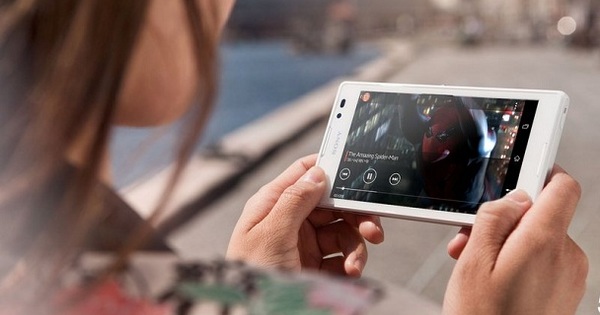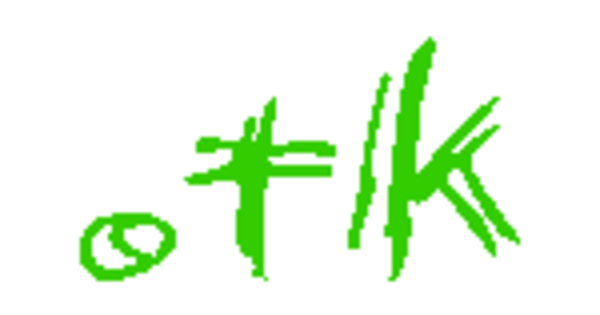Google Maps will be the best option for many users to navigate from point A to point B, but have you ever heard of Waze? This app does things a little differently. In this article, we'll tell you what you need to know about Waze.
Tip 01: Only for vehicles
One of the things that makes Waze different is that the app doesn't target all forms of traffic. If you want to cycle or walk, then this app is of no use to you. That's on purpose: Waze doesn't want to be a good app for all traffic, Waze wants to be the very best app for drivers. Therefore, it focuses on one segment. This directly makes the app easier to use than many other navigation apps, simply because you don't have to set up how you travel. You're traveling on four wheels, period… well, there's a motorcycle mode, by the way, but that aside. There is also a navigation for taxis, but that mode is not supported in the Netherlands.
Tip 02: Social
Waze is also a social app, which means that the app (Android / iOS) not only collects information from all Waze users, for example to provide current information about traffic on the road, but also that users can easily pass on information themselves, for example about road accidents and traffic jams. Users also actively do this, so that there is real-time information about the state of affairs on the road and you can, for example, take a different route in time. This improves the traffic flow. In addition, it allows users to indicate the location of speed cameras and mobile controls, which is obviously a popular feature among users.
 Waze even tracks if you're driving too fast
Waze even tracks if you're driving too fast Tip 03: Speed Limit
The power of Waze also lies in small things. When you are driving, you can see how fast you are driving at the bottom left. Now of course you see that on your own car, but the difference is that your car does not know what the maximum speed is and Waze does (note: this applies to standard situations and not to incidental changes). When you reach a speed that is higher than the speed limit, the font color will be displayed in red so that it attracts your attention and so you know that you are speeding. It is a pity that you cannot report adjusted speed limits yourself (for example during work in progress), but that is perhaps to guarantee safety on the road. There is, however, a way to indicate that the speed limit is incorrect (via the button Report (orange circle) and after card error, but that is not intended for temporary situations.
Tip 04: Make a report

What's important when using Waze is that you don't just consume, but also report situations yourself. There is a lot of information that can be collected by the app itself, but when an accident happens right in front of you, the app obviously doesn't realize it. You can then (as soon as it is safe) press the orange circle at the bottom right, after which you can indicate various things, such as a traffic jam, an accident or another form of danger. Interestingly, you can also ask for help in the event of a car breakdown, where you can indicate exactly what is going on. Fellow users can then come to your aid when they have the opportunity to do so.
Tip 05: Link calendar
Handy (but, in all honesty, not unique) is the ability to link your calendar. You do this by pressing the magnifying glass icon in the bottom left of the navigation view and then the option Link calendar at the bottom. Not only is that handy so you know where to go quickly and easily, the app also warns you (based on the real-time traffic information) when it's time to leave, so you never really have a reason to be late. Incidentally, the app is linked to your standard calendar (so your Google calendar on Android and your Apple calendar in iOS), you do not have much control over that.
Alternatives
Waze and Google Maps aren't the only navigation apps out there, of course. There are still plenty of alternatives. What about Sygic, which does not use the map information from Google, but from TomTom. Also HERE WeGo is a handy app with which you can adjust your navigation just a little more than with Google Maps. In this article we take a closer look at the alternatives on Google Maps.
Tip 06: Send arrival time
The handy thing about an app that knows what time you have to leave is that the app knows exactly what time you will arrive. Of course TomTom or Google Maps can do that too, but Waze bases that time on real-time traffic information collected by other traffic users. You can easily let your contacts know what time you will be arriving via Waze. When you have planned and started your route, a menu will appear containing, among other things, a green button with a car in it and the text below that Send ETA (which stands for estimated time of arrival). When you press this button, you select a contact person and send your arrival time. If this contact does not have a Waze account, you can send a text message. If the person in question does have a Waze account, he or she will receive a notification in Waze. The important difference is that with an account you can also view your progress and see where you are now, with a text message that is of course not possible.

Tip 07: Route overview
We've already talked about Waze's social features. They also come in handy when planning a route. You set up a route and someone on that route has indicated that there is danger. In that case, a triangle with an exclamation mark appears on the screen. You then know that something is going on on your planned route (of course that could also be a traffic jam or road closure). You can then press the button Routes on the left to select another route where there may be no details. At the top right you see a cogwheel, if you press this you can indicate whether you (default) go for the fastest route or want to avoid highways. The idea behind this is that you usually make the same choice, so that option does not have to be shown again in every screen and for every route.
Tip 08: Fuel prices

An additional feature that the app includes is the ability to save money on fuel. Suppose you are at a gas station and see that the prices of fuel are very favorable here. Then you can press the button Report (the orange circle) and then Fuel prices (this is only possible after you have driven more than 160 kilometers with the app). You can then indicate exactly what the fuel costs at this gas pump. Conversely, you can also easily see what the prices are at other gas stations. In the menu (which you bring up while driving by pressing the blue button with the arrow down) press the icon with the gas station. You will immediately see an overview of which filling stations there are and what exactly the fuel costs there. With the icon at the top right you can again indicate your default preferences, for example sorting by distance, price or brand. This option is of course available to everyone, not just those who have driven more than 160 kilometers.
Tip 09: Flexible voice sound
You can completely control Waze with your voice, which is of course so safe. But Waze also talks to you a lot and if you spend a lot of time in the car, you'd better get the instructions from a voice you like. Many navigation apps have a bloody annoying voice – which we actually think of "Femke", Waze's default voice. Fortunately, you can choose a different voice. You choose a voice by pressing the gear icon at the top right in the menu (which you call up by pressing the magnifying glass) and then Voting Instructions. The number of Dutch voices (two) is very limited compared to the number of English voices. That should only be a problem, since you can record your own voice for a while now. A Flemish voice is also available. We had thought that this would be a very time-consuming job, but it is not that bad. Apparently recording 43 sentences is all it takes to provide a navigation system with your own voice. Does anyone have Queen Máximá's phone number?
Tip 10: Link Spotify
Finally, a function that is not so much useful, but very pleasant. During long car journeys, your favorite music can have a relaxing effect and the easier you can call up that music, the safer. You can of course let the music play via your car radio, but that does not always work well with the navigation (when something is going on, you must be able to understand it). For that reason, it's super convenient that you can just link your Spotify account to your Waze app. Not only does this ensure that the music automatically becomes a bit softer with important announcements, it also ensures that you can easily listen to Spotify via your car kit, even in cars with a radio system that does not support Spotify.

The sun rises for nothing
Waze is completely free and we absolutely love it. Is there nothing annoying about this app? Unfortunately yes. Developing and maintaining an app like Waze obviously costs a lot of money and someone has to pay that bill. Waze doesn't do that by charging money for the app, but by building in advertising. This advertisement is of course not shown while driving, but for example when you are standing still at a traffic light or when you are close to a certain location. While we understand that Waze has to be paid for, it does cause some distraction somewhere. We would actually prefer that we just had to pay a few euros for Waze.

